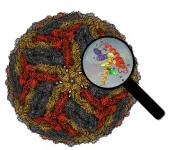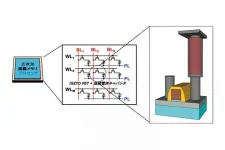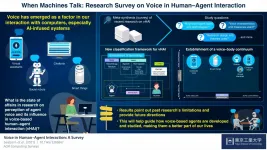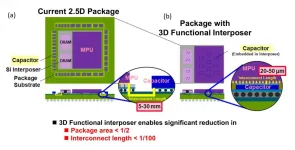(Press-News.org) Most prescriptions for the drug buprenorphine, used to treat opioid use disorder, are written by a small number of the health care providers, according to a new RAND Corporation study.
Published in the June 1 edition of the Journal of the American Medical Association, the study found that half of all patient-months of buprenorphine treatment during 2016 and 2017 were prescribed by just 4.9% of the physicians and other providers who prescribed the drug during the period.
"These findings have important implications for efforts to increase buprenorphine access," said Dr. Bradley D. Stein, the study's lead author and a senior physician researcher at RAND, a nonprofit research organization. "Our study suggests that targeted efforts to encourage more current prescribers to become high-volume prescribers, and encourage existing high-volume subscribers to safely and effectively treat even more patients, may be a potent way to increase buprenorphine treatment capacity."
Buprenorphine is a drug that helps people with opioid addiction to manage their illness and refrain from illicitly using opioids. Approved for use in 2002, buprenorphine can be prescribed by office-based physicians and other health providers such as nurse practitioners, historically once they have completed an approved course.
Traditional opioid treatment programs commonly require patients to take methadone on-site at a clinic under direct supervision of a health care provider. Such programs typically are located in urban areas, leaving many people in rural areas with little access to treatment.
With an estimated 2 million people across the country affected by opioid use disorder, prior research has shown that greater use of buprenorphine has made medication treatment more accessible to more of those who need help.
In the new study, RAND researchers used IQVIA Prescription data, which captures approximately 90% of all prescriptions filled at retail pharmacies in the U.S., to identify clinicians who prescribed buprenorphine formulations used to treat opioid use disorder at least once between January 2017 and December 2018, and calculated the total months of patient care each clinician provided.
Total patient-months of buprenorphine treatment was driven by a small percentage of high-volume prescribers. Half of all patient-months of buprenorphine treatment during 2017-2018 were prescribed by the most-active 4.9% of prescribers (a total of 2,450 prescribers).
These high-volume prescribers treated an average of 124 patients per month, with primary care physicians (63.6%), psychiatrists (14.3%), pain specialists (8.3%) and addiction specialists (4.4%) representing about 90% of all high-volume prescribers.
The monthly patient caseload for most of those providers was well below the current maximum patient limit of 275 patients prescribed buprenorphine at one time.
"Given that a relatively low number of providers account for most of the buprenorphine prescribing, providing targeted support to those willing to safely treat more patients may be a more promising strategy to increase medication treatment among people struggling with opioid addiction than primarily focusing on increasing the number of new prescribers," Stein said.
INFORMATION:
Support for the study was provided by the National Institutes of Health.
Other authors of the study are Brendan Saloner of Johns Hopkins University, Megan S. Schuler, Jill Gurvey and Mark Sorbero, all of RAND, and Dr. Adam J. Gordon of the University of Utah School of Medicine.
RAND Health Care promotes healthier societies by improving health care systems in the United States and other countries.
In a recent study, Australian scientists used an original approach to resolve the 3D structure of flaviviruses with an unprecedented level of detail, identifying small molecules known as 'pocket factors' as new therapeutic targets.
Flaviviruses infect humans by mosquito or tick bite, with symptoms ranging from fever and myalgia to life-threatening neurological and congenital conditions. Flaviviruses such as dengue, yellow fever and Zika threaten almost a third of the world's population, and new flaviviruses emerge regularly from animal reservoirs with the potential to cause epidemics. ...
A research team led by scientists at Université de Montréal has developed a unique observational tool for assessing children up to 5 years of age who have had a concussion. The work is explained in a study published in the Journal of Head Trauma Rehabilitation.
Pediatric traumatic brain injury (TBI) is particularly prevalent in toddlers; they're more likely to be injured because they have a lower sense of danger and are still developing physically. But parents and clinicians have trouble detecting symptoms of trauma, given the toddler's limited verbal skills.
"A young child will not tell you that they have a headache or feel dizzy," said Dominique Dupont, an UdeM postdoctoral student in neuropsychology and first author of the study.
"But assessing post-concussion symptoms ...
PHILADELPHIA--An odor-based test that sniffs out vapors emanating from blood samples was able to distinguish between benign and pancreatic and ovarian cancer cells with up to 95 percent accuracy, according to a new study from researchers at the University of Pennsylvania and Penn's Perelman School of Medicine.
The findings suggest that the Penn-developed tool -- which uses artificial intelligence and machine learning to decipher the mixture of volatile organic compounds (VOCs) emitting off cells in blood plasma samples -- could serve as a non-invasive approach ...
Our lives today are governed by electronics in all shapes and forms. Electronics, in turn, are governed by their batteries. However, the traditional lithium-ion batteries (LIBs), that are widely used in electronic devices, are falling out of favor because researchers are beginning to view lithium metal batteries (LMBs) as a superior alternative due to their remarkably high energy density that exceeds LIBs by an order of magnitude! The key difference lies in the choice of anode material: LIBs use graphite, whereas LMBs use lithium metal.
Such a choice, however, comes with its own challenges. Among the most prominent ones is the formation ...
Singapore, 1 June 2021 - The discovery and development of new small-molecule compounds for therapeutic use involves a huge investment of time, effort and resources. Giving a new spin to conventional chemical synthesis, a team of researchers from the National University of Singapore (NUS) has developed a way to automate the production of small molecules suitable for pharmaceutical use. The method can potentially be used for molecules that are typically produced via manual processes, thereby reducing the manpower required.
The research team that achieved this technological breakthrough was led by Assistant Professor Wu Jie from the NUS Department of Chemistry as well as Associate Professor Saif A. Khan from ...
Bribery in the public healthcare does not solve the problem of poor quality of services, and even exacerbates it, researchers argue. The same can be said about the well-being of patients and their own assessment of health. In other words, bribes in the healthcare do not provide good quality services and do not pay off. Such conclusions were reached by an international team of researchers, including Olga Popova, the article's co-author, an associate professor at the Ural Federal University (UrFU, Russia).
Researchers examined survey data on 41,000 citizens from 28 post-communist countries in Central and Eastern Europe, as well as ...
Tokyo - Machine learning is the process by which computers adapt their responses without human intervention. This form of artificial intelligence (AI) is now common in everyday tools such as virtual assistants and is being developed for use in areas from medicine to agriculture. A challenge posed by the rapid expansion of machine learning is the high energy demand of the complex computing processes. Researchers from The University of Tokyo have reported the first integration of a mobility-enhanced field-effect transistor (FET) and a ferroelectric capacitor (FE-CAP) to bring the memory system into the proximity of a microprocessor and improve the ...
In the modern day, our interactions with voice-based devices and services continue to increase. In this light, researchers at Tokyo Institute of Technology and RIKEN, Japan, have performed a meta-synthesis to understand how we perceive and interact with the voice (and the body) of various machines. Their findings have generated insights into human preferences, and can be used by engineers and designers to develop future vocal technologies.
As humans, we primarily communicate vocally and aurally. We convey not just linguistic information, but also the complexities of our emotional states and personalities. Aspects of our voice such as tone, rhythm, and pitch are vital to the way we are perceived. In other words, the way we say things matters.
With advances in ...
Magnetic fields are ubiquitous throughout our Milky Way Galaxy and play a crucial role in all dynamics of interstellar medium. However, questions like how Solar-type stars form out of magnetized molecular clouds, whether the role of magnetic fields changes at various scales and densities of molecular clouds, and what factors can change the morphology of magnetic fields in low-mass dense cores still remain unclear.
A new study led by Dr. Eswaraiah Chakali from Prof. LI Di's research group at the National Astronomical Observatories of the Chinese Academy of Sciences (NAOC) has partially answered these questions. ...
Scientists at Tokyo Institute of Technology develop a 3D functional interposer--the interface between a chip and the package substrate--containing an embedded capacitor. This compact design saves a lot of package area and greatly reduces the wiring length between the chip's terminals and the capacitor, allowing for less noise and power consumption. Their approach paves the way to new semiconductor package structures with greater miniaturization.
Electronics started big size-wise but have only grown smaller and more compact over time. Today, even smartphones outperform the bulky computers from the 1980s by orders of magnitude. Unfortunately, ...







